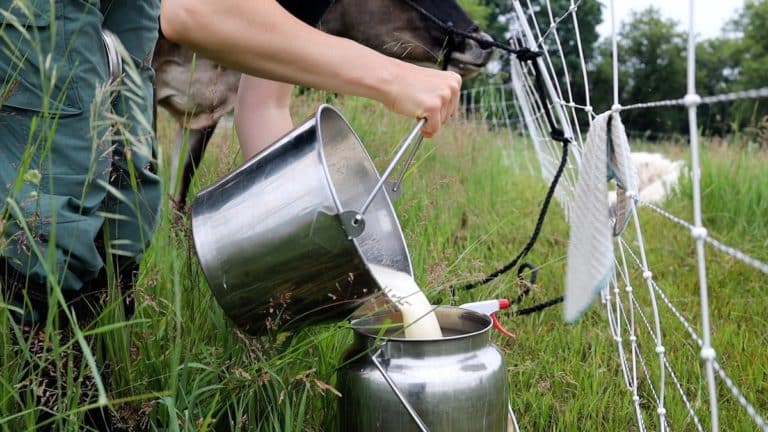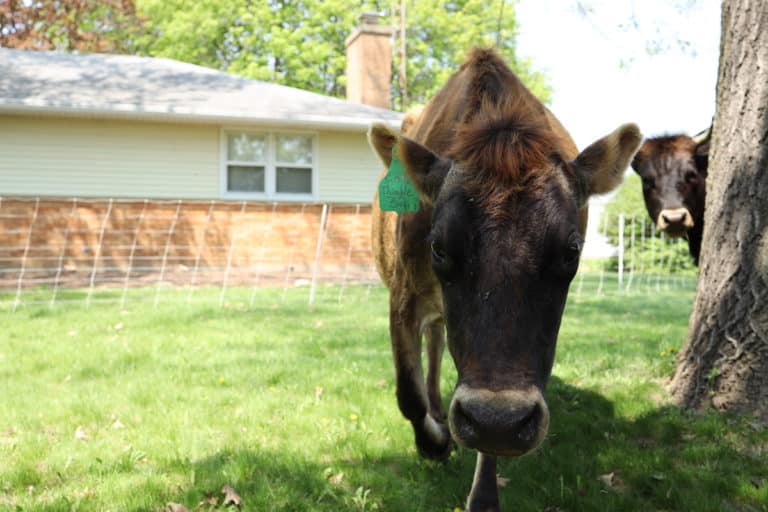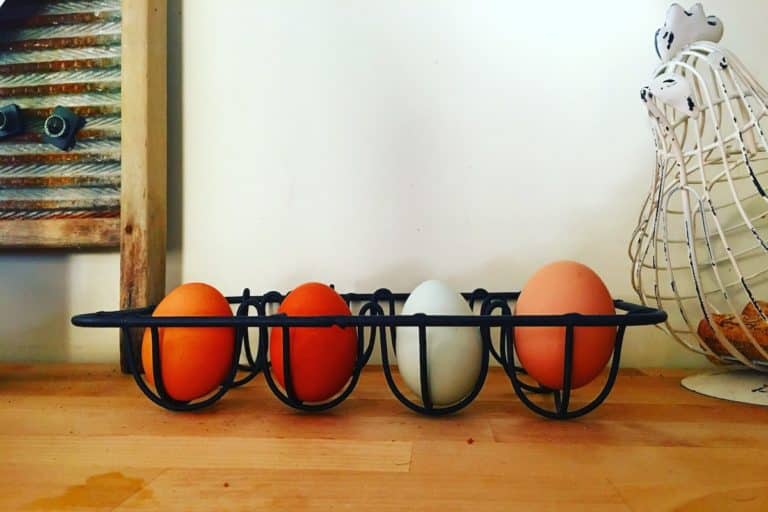Feeding Chickens Egg Shells (Why, When, & How)
Homesteading is all about being resourceful! Minimize waste. Use everything. Find ways to repurpose things. Well, one of the best homesteading hacks out there is feeding chickens egg shells instead of tossing them out! We’ll talk all about do’s and don’ts of egg shells for chickens.
If you’re new to backyard chickens, it can be overwhelming looking into what chickens can and can’t eat. In the video below, we give an overview of what kitchen scraps we’ve learned to avoid giving our chickens in our 9+ years of chicken keeping.
Can Chickens Eat Egg Shells?
In short—Yes!—chickens will gladly eat crushed egg shells. A chickens body does not produce calcium on its own so they rely entirely on their feed and forage to intake calcium. And egg shells are a great supplemental source of calcium for chickens!
Many pre-mixed layer feeds will contain some source of calcium in them. However, it is always best to give your chickens a free-choice calcium source in addition. The common options you’ll find at your feed or farm supply store are oyster shells or limestone.
But wouldn’t it be great if there were a free option? Aha—egg shells!

Repurposing egg shells to feed back to your chickens is a great source of calcium. Chicken keepers have been putting this to practice for hundreds of years to help keep their chickens happy, healthy, and laying consistent eggs.
When a laying hen is deficient in calcium, it shows. In our own flock, I know our ladies aren’t getting enough calcium when I reach for an egg in the laying box and poke a finger right through the shell! On rarer occasions, we’ve even had chickens lay eggs with the shell entirely missing and just the thin, translucent inner membrane surrounding the egg.
And have you ever seen the ole’ golf ball in the laying box trick? If a chicken is really deficient in and desperate for calcium, they may start canibalizing their own eggs and eating them. Hence, farmers long ago discovered a golf ball, or hard fake egg, can help discourage a chicken from this behavior.
Regardless, all these signs point to the importance of calcium in a chickens diet. So let’s look at why feeding chickens egg shells can be a good idea.
WHY Feeding Chickens Egg Shells is Beneficial
Chickens lay eggs almost every day. And producing and delivering an egg is an incredibly energy and resource intensive process.
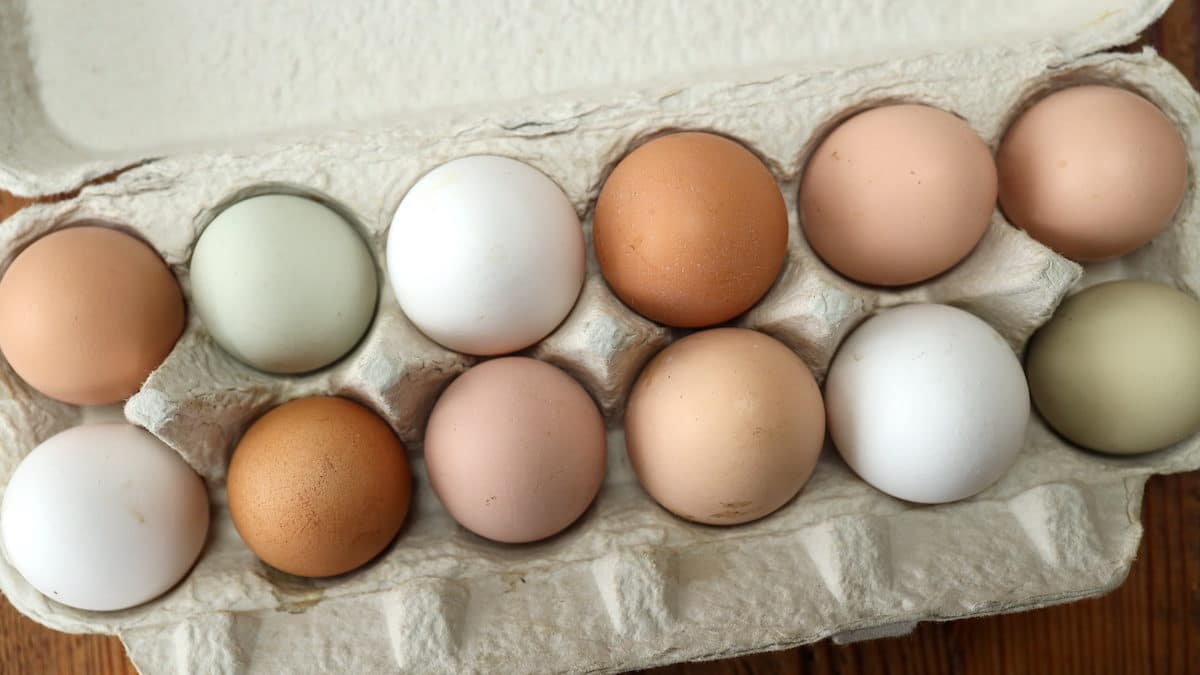
Egg shells themselves are made up almost entirely of calcium. Therefore, too little calcium present in a chickens diet may result in thinner than desired egg shells. While an abundance of calcium may result in too thick an egg shell.
Chickens are best at regulating their calcium intake themselves. Which is why it’s important you never mix egg shells or other supplemental calcium sources into their feed. This can cause calcium toxicity.
Instead, give them egg shells free choice. We do this by simply dumping a small pile of crushed egg shells out for them couple times a week that is separate from their feed. This way, they can take it or leave it as needed.
When chickens are lacking calcium too severely, their body will compensate by pulling calcium from their bones. This can weaken the skeletal structure of the chickens and lead to other issues, especially as chickens age.
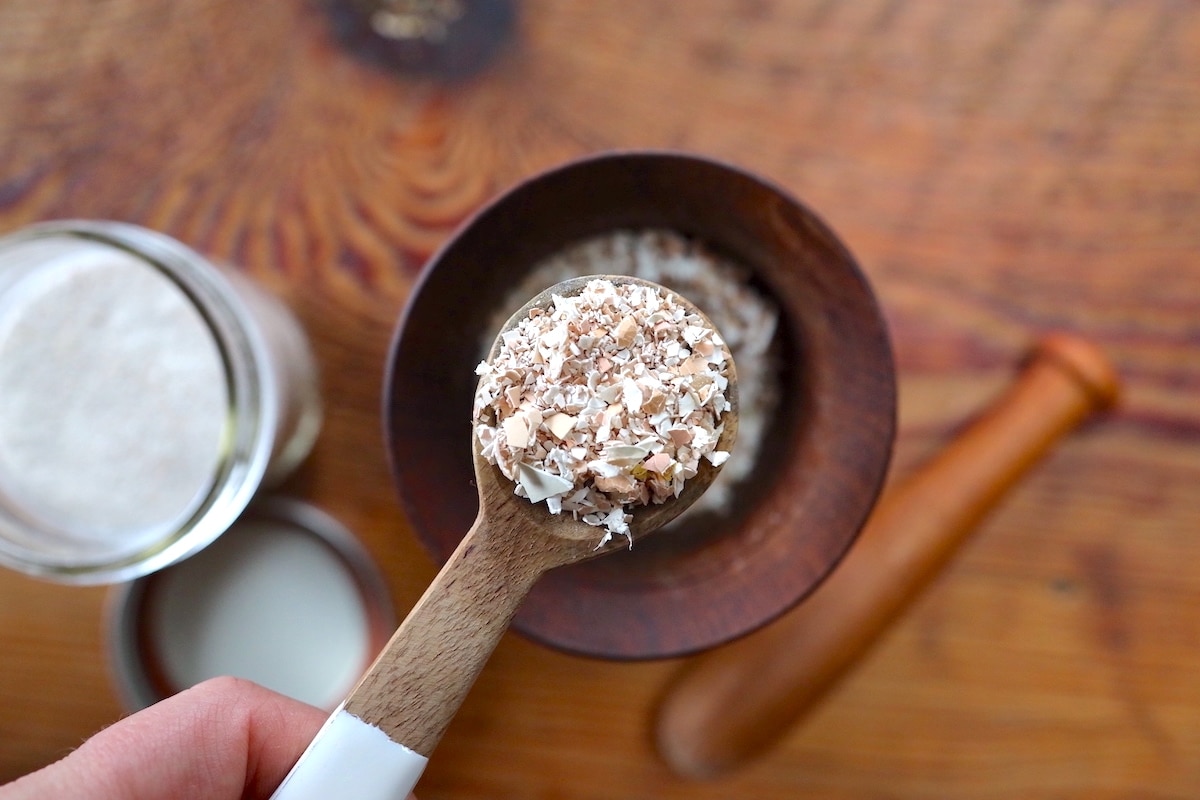
Many also fear that feeding your chickens egg shells will result in chickens eating they own eggs. In reality, the opposite is true. Chickens turn to eating their own eggs because they are deficient in calcium in the first place. So, a chicken regularly given a steady source of egg shells or another calcium supplement is much less likely to develop this habit.
WHEN – What age can chickens eat egg shells?
Chickens should not need supplemental calcium until they begin laying eggs. Typically, this is when they are between 18-22 weeks old.
If you are raising baby chicks, your best bet is to hold off on giving them egg shells until the whole flock has started laying. Young chickens whose reproductive organs are not yet fully developed may begin egg production prematurely if exposed too soon to supplemental calcium. This can lead to serious issues like a prolapsed vent or becoming egg bound.
So, don’t rush into giving your chickens crushed egg shells too soon! Wait until they have all begun laying consistently, and then gradually introduce a calcium supplement for them.
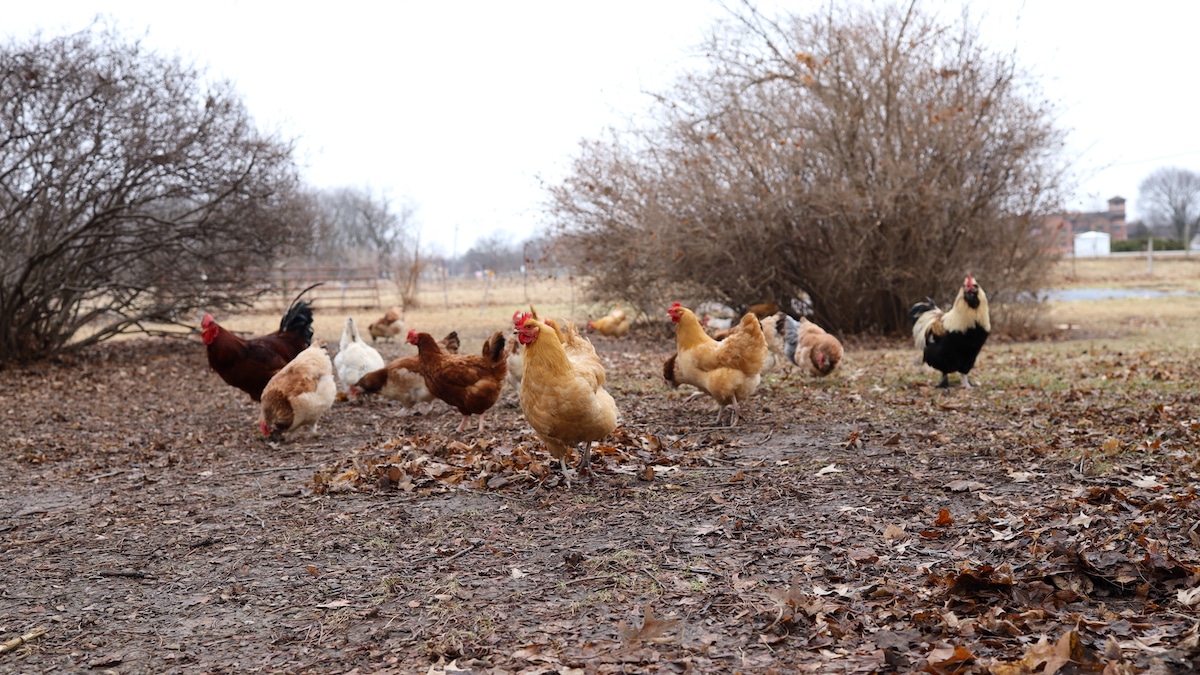
The timing of this can get tricky when you introduce a new batch of pullets that are yet to start laying into a flock of mature layers. In this case, we have found it most beneficial for the whole flock to significantly reduce, or cut out altogether, giving our chickens supplemental calcium as the pullets near that 8-12 week old mark. This may be less than optimal for your mature layers, but it helps avoid egg laying troubles in your young layers.
HOW To Feed Chickens Egg Shells
There are many ways to feed egg shells to your chickens and its best not to overthink it. Here is the simple method we use.
- Collect egg shells in a large bowl, bucket, or container. They can be crushed down to make more room. If there is a substantial amount of dirt or poop stuck to the eggs, rinse off with warm water prior to consumption.
- Dry in the oven (OPTIONAL). When enough are collected, lay flat on a cookie sheet and dry shells in the oven for 15-30 minutes at 200°F. This will make them more brittle. Note that this step is optional. Many may choose to skip it and go directly to Step 3.
- Crush your egg shells into bite-size pieces. We like to do this by using a mortar and pestle. You can also place in a thick bag, like a ziplock bag, and crush the shells by hand or with a rolling pin. Or, pulsing in a blender or food processor can also work. Just be sure to keep your egg shells at a crumble consistency and not a powder, so the chickens can easily eat them.


Once your egg shells are crushed they are ready to be fed to your chickens! There’s a couple different ways you can do this.
One is to keep a trough or bowl in your chicken coop continually filled with crushed egg shells and top it off as needed. Another method is to just offer them egg shells in a pile on the ground a few times a week or as it is available.
As mentioned earlier, we do the latter and have had consistently strong egg shells from our chickens. Both methods work and you can choose what is best for you and your flock.
What to Avoid when Feeding Chickens Egg Shells
We’ve already mentioned a couple of these, but there are some things you’ll want to avoid when feeding your chickens egg shells. Here’s the list:
- Never mix egg shells with your chickens feed. Always offer it free choice.
- Crush egg shells into small enough pieces so they no longer resemble an egg. You don’t want to whet the appetite for your chickens to start eating eggs in the coop.
- Egg shells should not be offered to young chickens who haven’t started laying yet or to roosters.
- Don’t give chickens anything but their own eggs. This includes avoiding eggs from other flocks or store bought eggs which could carry parasites or diseases.
- Consider supplementing with a calcium grit in addition to egg shells.
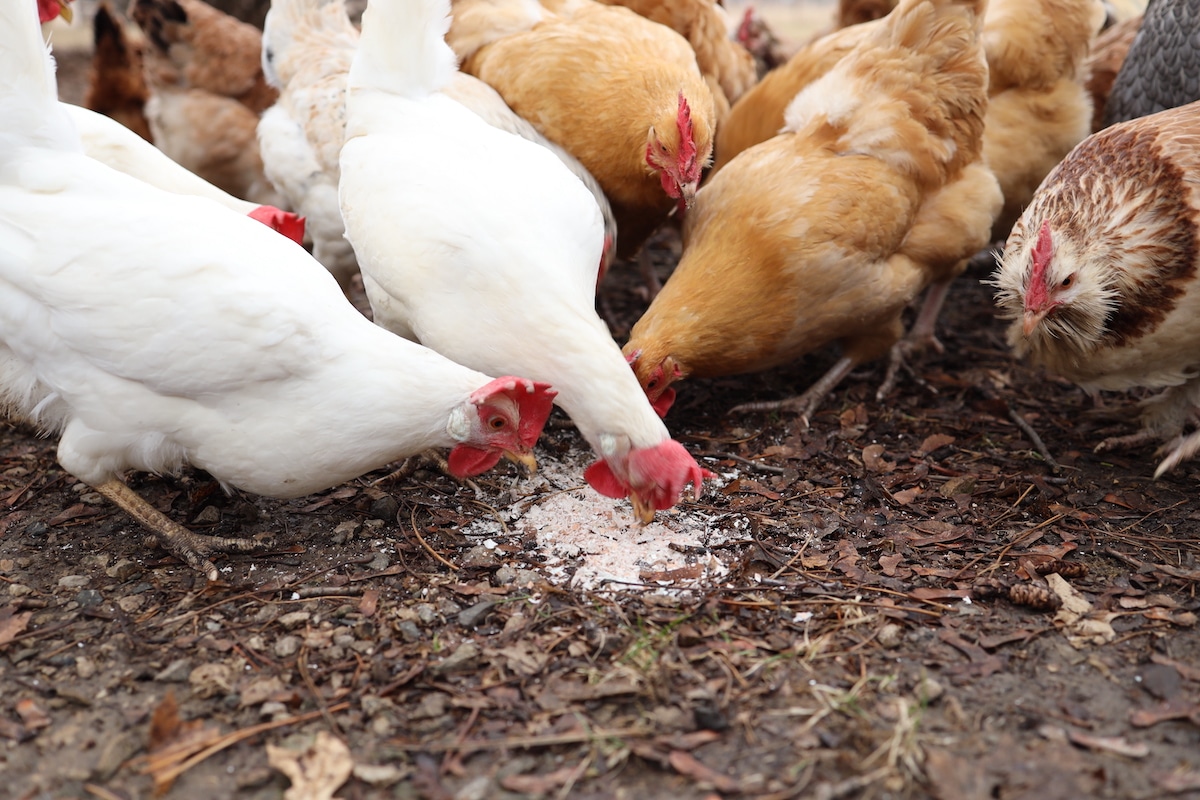
In regard to that last point, some recommend chickens also have access to larger, grittier forms of calcium like crushed oyster shells. This is because chickens lack teeth to chew their food. To compensate, they have what’s called a gizzard that collects pebble sized rocks and other materials that aid in the digestion of food.
So, whether it’s oyster shells or some other form of pebble or grit, it is important to make sure your chickens have access to something in order to have proper digestion of food. Free ranging chickens have an easier time finding and ingesting the grit they need naturally. Either way, it’s good to consider adding a supply of grit for your chickens that is separate from their feed and egg shells.
Other Sources of Calcium For Chickens
Dairy can be another rich source of calcium for chickens. Many farms and homesteads have a milking animal and often that means a generous supply of fresh milk to go around.
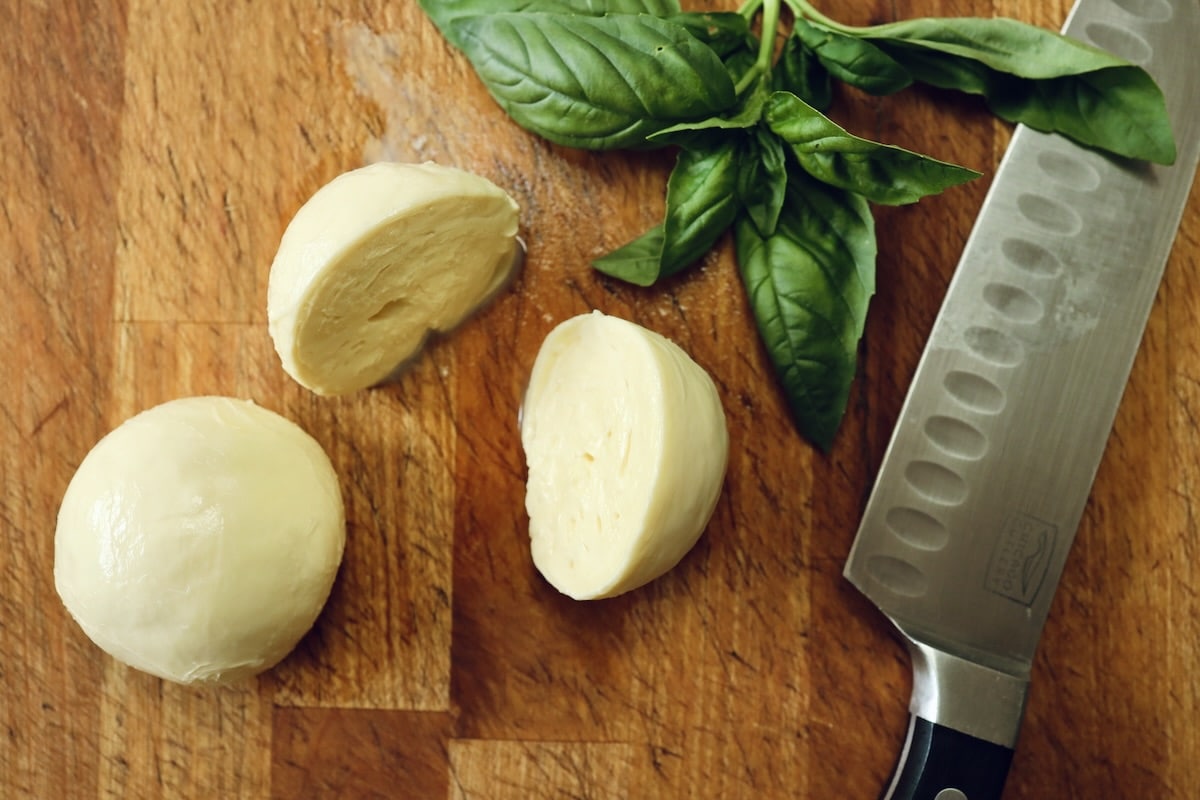
The key, however, is moderation. A chickens digestive system is not designed to handle dairy, which could upset their stomach if consumed too often and in too high a quantity.
Dairy can come in many forms and some are better suited for chickens than others. For instance, butter should NOT be fed to chickens because of its high fat content. Cheese on the hand, can be a great source of calcium, along with protein, that your chickens will love to gobble up. You can learn more in our post—Can Chickens Eat Cheese?
Other Ways to Use Egg Shells
Did you know egg shells can be commonly used for human consumption as well? When ground down to a fine powder, egg shells can be a great source of supplemental calcium when sprinkled in a dish or smoothie. It can also be used in skin care such as a homemade remineralizing toothpaste.
You can check out our post—How To Make Eggshell Powder—for the extra steps needed to make egg shells safe for human consumption.
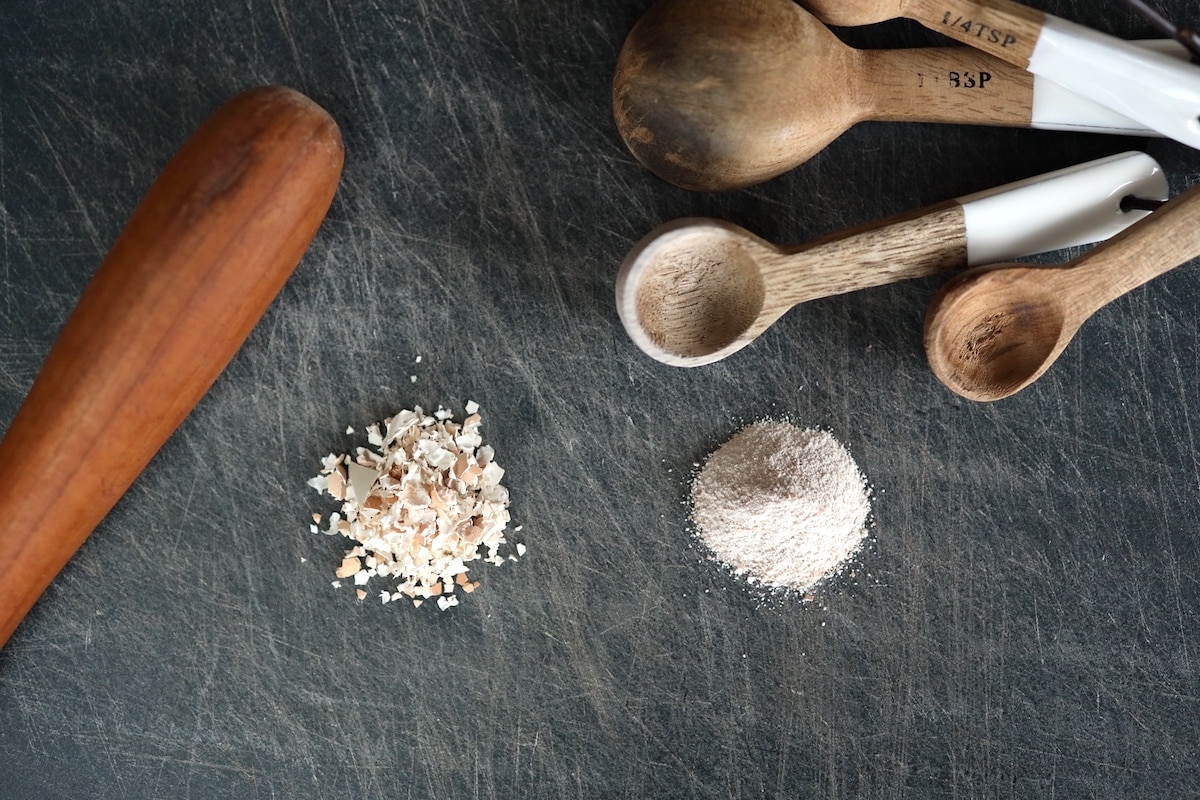
Pin it for later!


